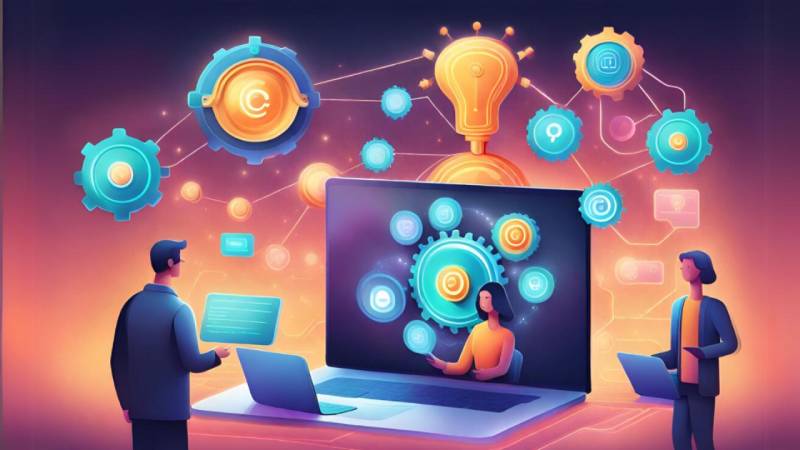You want to get more leads. But marketing teams are already working at full speed and trying to achieve results with limited resources. How can you use software to build a lead generation engine that delivers big results?
Marketing automation can help you streamline processes, increase productivity, and generate more leads. Helpful. Are you ready to bring your team up to speed?
When creating automations, try to automate repetitive processes and create more customer connections. But achieving great results goes far beyond streamlining efficiency and expanding scope.
The key is to create automated sequences that adapt to your audience’s behavior. As prospects interact with your brand at different touchpoints, marketing automation software delivers different messages.
With the right approach, you can use automation software to deepen connections, add value, and provide qualified leads to your sales team. As you begin your marketing automation journey, consider the following tips to get the most out of your solution.
1. Creating Micro Segments
Micro segmentation goes beyond traditional audience segments. Therefore, you should create segments based on various common demographic, psychographic, and behavioral characteristics. Once you’ve identified your microsegments, you can create automations that deliver content that resonates with each audience at a more granular level.
2. Create adaptive automation
The most important criterion is that the automation sequence changes in response to changes in viewer behavior. Different customers within a microsegment perform different actions, so automation must adapt without intervention. This requires some forethought, as you need to create targeted workflows that follow different paths depending on your audience’s behavior.
Example: When creating an email lead nurturing campaign, you can create triggers that send emails in different orders based on the links that users click within each email. As a result, different prospects participating in the same automation may start with the same email but end up with different content.
3. Personalize the Experience
When you create automations, you want your prospects to feel like the messages are targeted specifically to them. Create micro-segments and customize each engagement based on behavior, so you can take the next step and personalize your conversations. Therefore, your bot should adopt a conversational tone, focusing on what is most interesting to each potential customer.
Example: Imagine interacting with chat software on a product page. Depending on how your automation is configured, enrichment data can identify user name and postal code targeting criteria to determine user location. Using this data, bots can send personalized messages that look like they’re coming from a human with a personalized approach, such as: “Hey Michelle, did you know that we have a store nearby, right off the 10 freeway? Do you want me to send you directions?”
4. Deepen your connections
Use automation software to deepen your connections with prospects. Adopt an approach focused on value creation. The principle of reciprocity suggests that people desire retribution for good deeds. Providing value to your audience, such as offering a helpful whitepaper or video, increases the likelihood that they will want to connect with your brand in the future. And yes, you can automate all of this to create conditions (think “if this, then that” scenarios) that trigger the delivery of behavior-driven content.
5. Automatically qualify leads
Sales teams can’t spend the same amount of time on every lead. And why should you? That’s your job. Automation technology allows you to identify customers who are most likely to buy. With the right software and a well-written automated process, you can categorize and qualify your leads to pass on only those with a high likelihood of buying.
6. Integrating Optimization Science
Approach the implementation of automation software with optimization science in mind. Optimization science focuses on maximizing the potential of customer-centric technology. Optimal results can be achieved by using automated software to trigger the brain’s responses at the right time.
7. Running A/B Tests
Once your automation is running, you need to make sure it’s optimized. Use A/B testing to evaluate the effectiveness of your workflow. Remember: Just because you’re successful doesn’t mean you can’t improve.
- Top 5 Health Insurance Stocks to Add to Your Portfolio - July 26, 2024
- 7 Reasons Edamame is Great for Your Health - July 26, 2024
- 2024 Paris Olympics: How Many US Athletes Are Competing? - July 26, 2024





